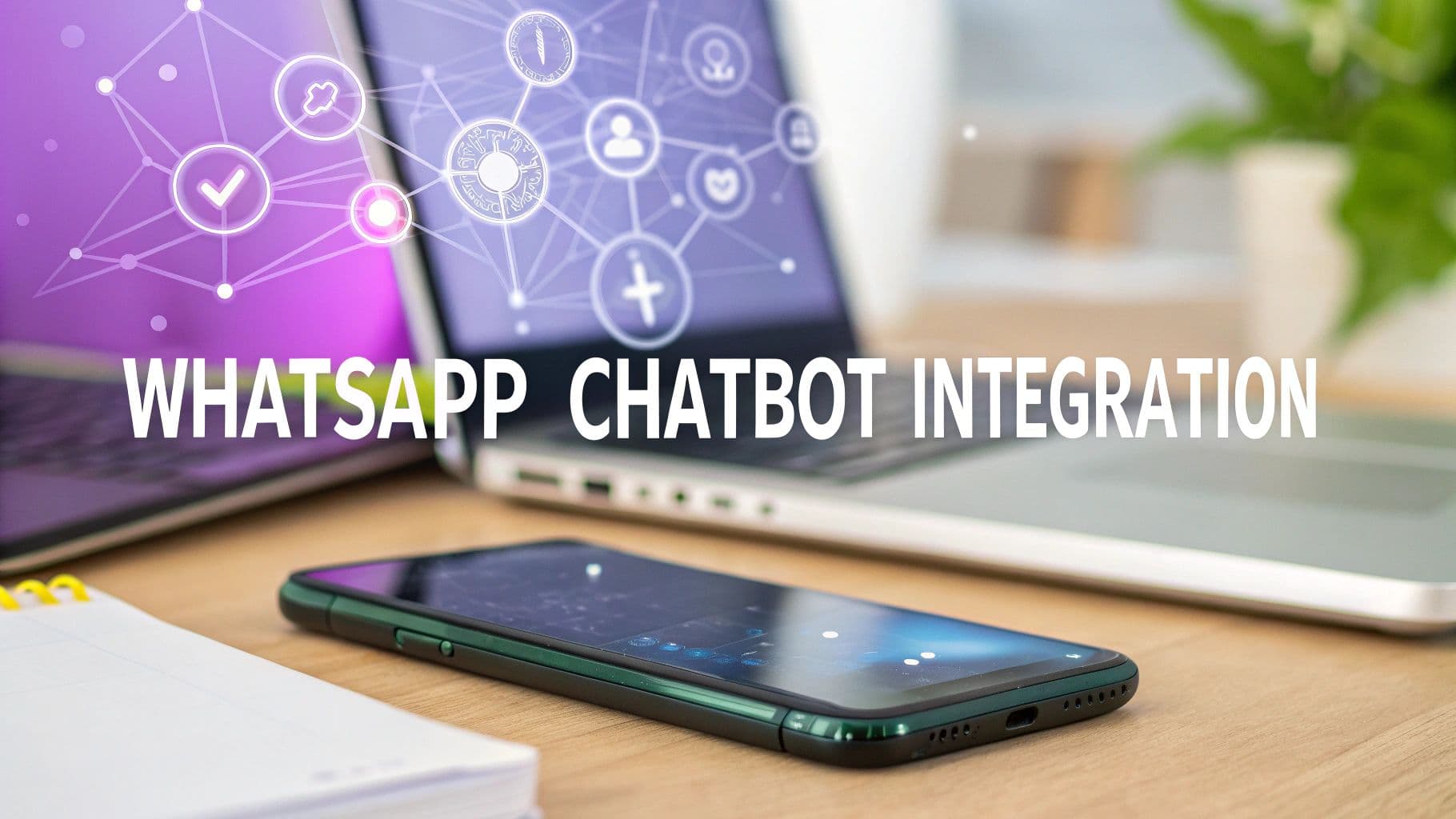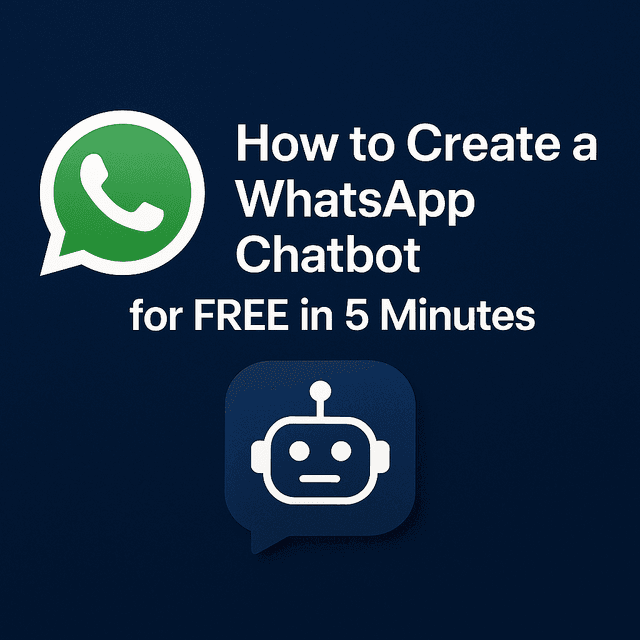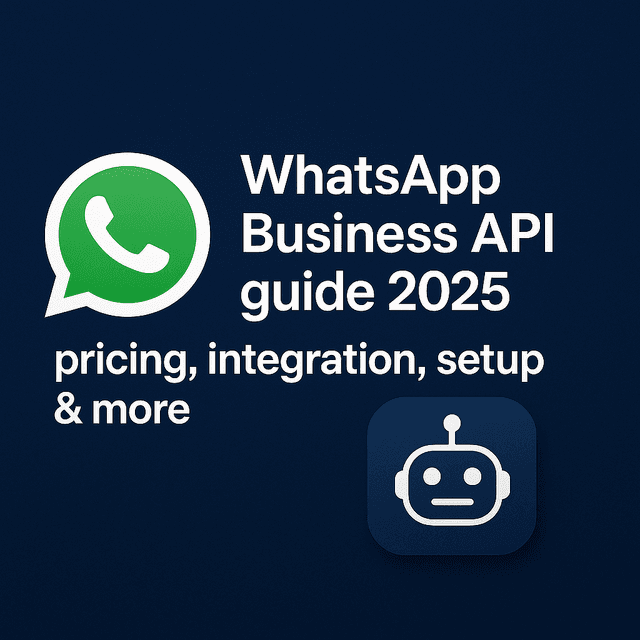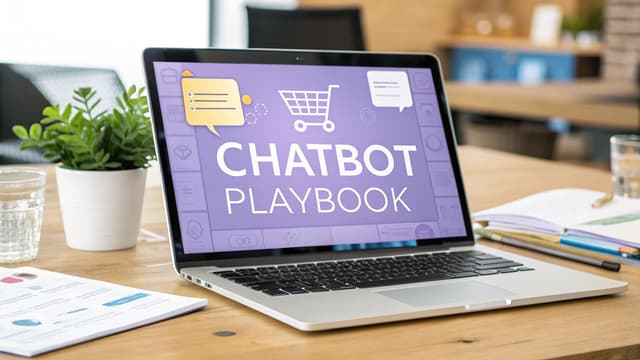The Evolution of WhatsApp as a Business Powerhouse
Remember swapping messages with friends and family on WhatsApp? Back then, connecting with businesses simply wasn't an option. Today, WhatsApp has become a vital tool for businesses to connect with customers globally. This shift is largely thanks to the WhatsApp Business API, opening doors to unprecedented customer engagement at scale.
One of the most significant developments is the integration of WhatsApp chatbots. These automated helpers let businesses offer personalized interactions while managing a high volume of inquiries. Imagine providing instant support to thousands of customers, 24/7. That's the power of WhatsApp Channel integration: answering questions, processing orders, and even scheduling appointments, all without human intervention.
From Basic Business Accounts to Intelligent Chatbots
The standard WhatsApp Business app provides useful features for small businesses, such as setting up business profiles and automated greetings. However, the real power of WhatsApp for business lies in integrating chatbots through the API. This unlocks more complex interactions, moving beyond basic automated replies to dynamic conversations and tailored experiences. For example, a chatbot could guide a customer through choosing a product, offer personalized suggestions, or even resolve technical problems.
This evolution is changing customer expectations. Immediate replies and 24/7 availability are quickly becoming the standard. Customers now expect businesses to be accessible on their preferred platforms, and for many, that's WhatsApp. This highlights the importance of adopting WhatsApp Business AI to stay competitive and meet evolving needs.
The adoption of chatbots within WhatsApp has grown significantly among businesses, thanks to the WhatsApp Business API. By 2025, over 5 million businesses used this platform to manage customer communications. This widespread use shows the value of messaging apps for customer service and lead generation. WhatsApp's massive user base, with more than 2.95 billion monthly users, makes it a strong platform for direct customer engagement. The use of chatbots, especially in regions like India where WhatsApp holds a market share of roughly 97%, boosts the efficiency of customer interactions. Find more detailed statistics here: WhatsApp Business Statistics
The Future of Business on WhatsApp
The future of WhatsApp as a business platform is clear: deeper integration with AI-powered chatbots. Businesses using tools like FlowGent AI and a ManyChat alternative can offer even more personalized and proactive customer experiences. With the ability to anticipate customer needs and connect with other business systems, WhatsApp chatbots are set to become essential for businesses looking to succeed.
Why WhatsApp Chatbots Are Changing the Customer Experience Game

WhatsApp chatbots are transforming how businesses connect with customers. This isn't just a fleeting tech trend; it represents a significant shift towards enhanced customer satisfaction and improved operational efficiency. Companies using WhatsApp chatbots are already reaping substantial benefits.
24/7 Availability and Personalized Support
A primary advantage of integrating WhatsApp chatbots is the 24/7 availability. Customers appreciate getting their questions answered and issues resolved instantly, regardless of the time. This constant accessibility fosters customer loyalty and significantly boosts satisfaction.
Beyond simply being available, these automated responses offer personalized support tailored to individual customer needs. Platforms like FlowGent AI empower businesses to move beyond generic replies, making customers feel valued and understood.
This personalized, instant support often outperforms traditional methods. Consider the delays of email, the hold times of phone calls, and even the limitations of live chat due to staffing. WhatsApp chatbots effectively bridge these gaps.
Reducing Costs While Improving Customer Satisfaction
Smart businesses are realizing that WhatsApp chatbots can reduce support costs while elevating crucial performance indicators. By automating routine inquiries, human agents can dedicate their time to more complex issues.
This translates to faster resolution times for simpler problems and more focused attention for complicated requests. The result? Higher customer satisfaction and increased overall efficiency.
The rise of AI-powered tools is also reshaping customer interactions. Projections indicate that by 2025, AI will manage 95% of customer communications. This shift reflects a growing emphasis on providing sophisticated, personalized support. Interestingly, 55% of businesses already employ chatbots for lead generation. You can find more insightful Chatbot Statistics online. WhatsApp chatbots excel in this area, providing human-like interactions through advanced technologies like Natural Language Processing (NLP) and machine learning. These technologies enable chatbots to understand customer preferences and tailor responses accordingly, boosting both engagement and retention.
Creating Seamless Customer Journeys
WhatsApp chatbots are revolutionizing the customer journey by creating streamlined, meaningful experiences. They effectively combine the efficiency of automation with the personalized touch of human interaction.
For complex or sensitive issues, the chatbot can seamlessly transfer the conversation to a human agent, ensuring the customer receives the appropriate level of support. This blend of automated and human assistance creates a more satisfying and efficient experience, ultimately strengthening customer relationships and enhancing brand loyalty.
Building Your WhatsApp Chatbot: Technical Foundations That Matter
Integrating a WhatsApp chatbot might seem like a complex undertaking, but grasping the key technical elements simplifies the process significantly. This section clarifies those technical requirements, guiding you toward the right integration method for your business.
WhatsApp Business API: Your Gateway to Chatbot Integration
The WhatsApp Business API is the cornerstone of any chatbot integration. This API acts as the bridge between your chatbot and WhatsApp servers, enabling the sending and receiving of messages. Before you can start building, you'll need to be verified by WhatsApp, a process that confirms your business's legitimacy.
Choosing the Right Integration Path: Direct API vs. Third-Party Platforms
You have two main options for integrating a WhatsApp chatbot: direct API implementation or using a third-party platform. Direct implementation provides more control and allows for extensive customization. However, it requires significant technical expertise and a dedicated server infrastructure. This typically means having a team of developers to manage the integration, maintenance, and ongoing development.
On the other hand, third-party platforms like FlowGent AI streamline the process. They offer a user-friendly interface, pre-built functionalities, and handle the technical heavy lifting for you. This approach saves development time and resources, allowing you to focus on designing effective conversation flows and optimizing your chatbot's performance. Check out our WhatsApp Business API guide. Learn how customer support automation can enhance the efficiency of your WhatsApp chatbot.
Infrastructure and Authentication: Building a Secure Foundation
No matter which integration method you choose, certain infrastructure components are essential. With direct API access, you'll need robust servers capable of handling message volume, secure authentication protocols to protect user data, and a well-defined development process to ensure everything runs smoothly. Security is crucial; neglecting proper authentication protocols can leave your business and customer data vulnerable.
Third-party platforms often manage these technical aspects for you. However, understanding their security measures is still vital. Choose platforms that prioritize data encryption, comply with relevant industry regulations, and offer transparent security practices.
Decision Tree: Choosing Your Ideal WhatsApp Chatbot Integration Method
The decision tree below helps visualize the decision-making process for choosing a WhatsApp chatbot integration method. It outlines the key factors to consider when making this decision.
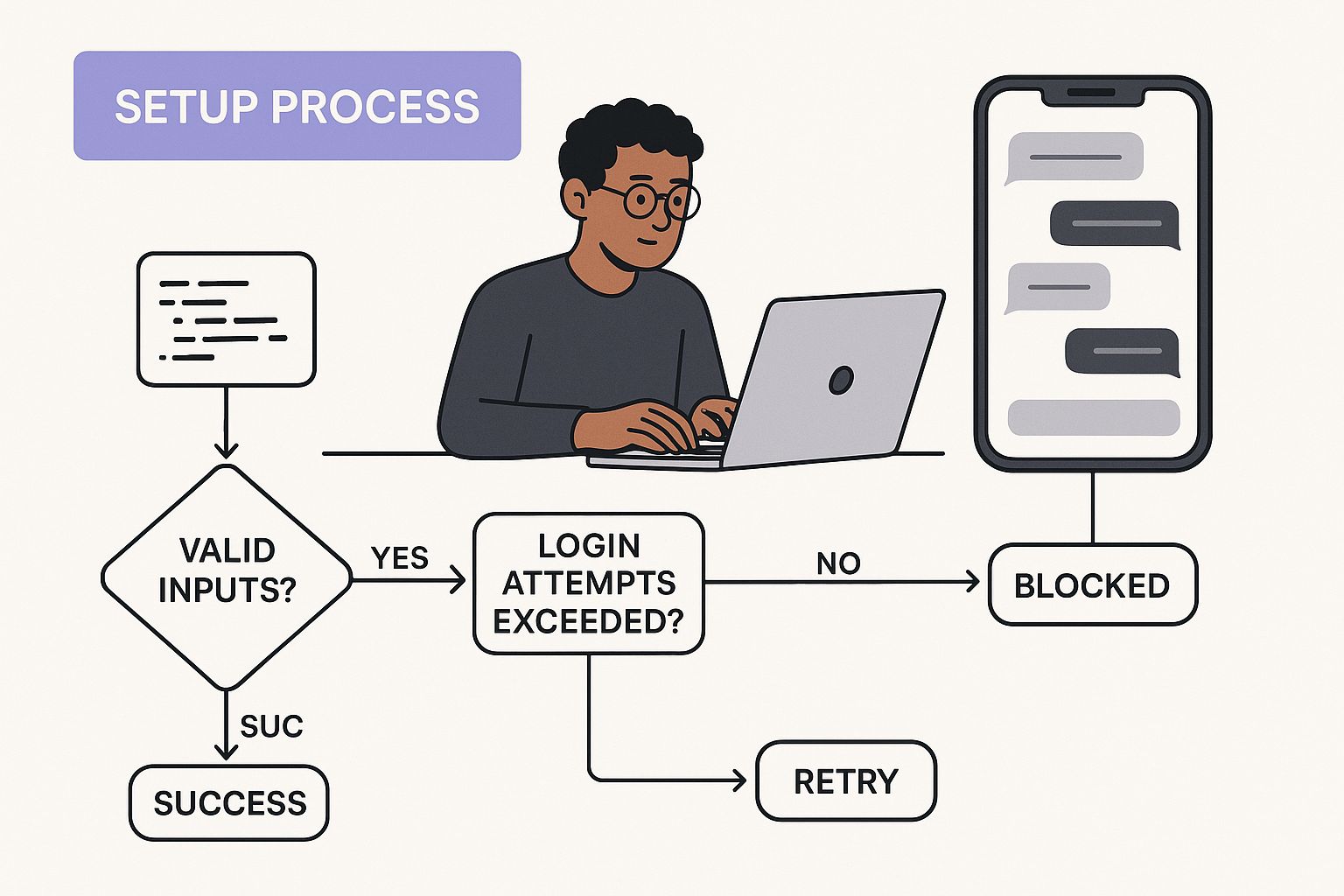
This decision tree guides you through the key considerations, including in-house development resources, budget, timeframe, and scalability needs. By using this decision flow, you can weigh the pros and cons of each approach and confidently choose the best fit.
To help you further evaluate your options, we've compiled a comparison table outlining the key differences between direct API integration and using a third-party platform.
WhatsApp Chatbot Integration Methods Comparison This table compares different approaches to implementing WhatsApp chatbot integration, helping businesses choose the most suitable method based on their technical capabilities and requirements.
| Integration Method | Technical Complexity | Development Time | Cost | Customization | Maintenance |
|---|---|---|---|---|---|
| Direct API Integration | High | Long | High | Extensive | Complex, requires dedicated team |
| Third-Party Platform | Low | Short | Lower | Moderate, platform-dependent | Simplified, managed by the platform |
This table highlights the trade-offs between control and convenience. Direct API integration offers greater flexibility but demands more resources, while third-party platforms provide a simpler, faster, and often more affordable solution. Choosing the right foundation is the first step towards building engaging customer experiences and reaching your business goals.
Crafting Conversations That Convert: Design Principles That Work
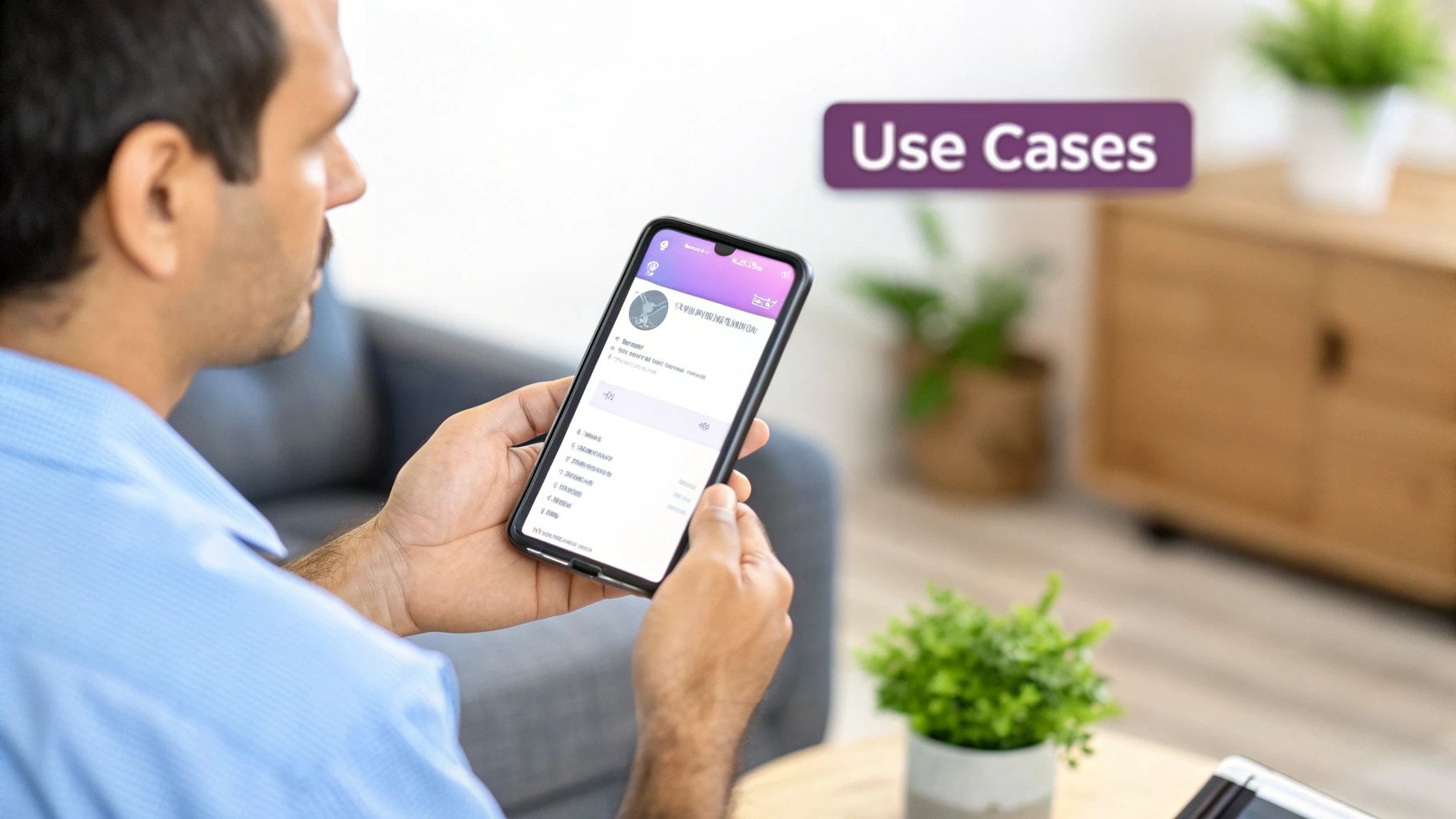
Building a WhatsApp chatbot is more than just plugging in some code. It's about understanding how people communicate and creating conversations that feel natural and helpful, ultimately leading to conversions. Let's explore the design principles that make this a reality.
The Psychology of WhatsApp Interactions
Successful WhatsApp chatbot integration depends on respecting the platform's casual nature. Users want quick, concise answers, not long-winded explanations. Conversation flows should prioritize brevity and clarity, like a friendly text message, not a formal email.
For example, a welcome message should be short, inviting, and offer immediate value. Think along the lines of a discount code or a quick link to support options.
Structuring Conversation Flows: Respecting User Time
Nobody enjoys navigating endless menus or complicated decision trees. Effective WhatsApp chatbots mimic natural dialogue. They present clear choices and guide users towards their goals quickly.
Consider using buttons within WhatsApp to guide users, rather than relying on typed responses. This streamlines the experience, especially on mobile. It simplifies the process and minimizes user effort.
Welcome Messages and Menu Structures: First Impressions Matter
The first interaction sets the stage for the entire conversation. A well-crafted welcome message significantly impacts user engagement. Avoid generic greetings. Personalize the message based on user context or previous interactions.
Design menu structures that are intuitive and easy to navigate. Clear labels and logical grouping will make the interaction feel more human.
Graceful Error Handling: Maintaining Customer Relationships
Even the best chatbots can run into errors. The key is handling these situations smoothly. Instead of a basic error message, provide helpful suggestions or redirect the user to a human agent.
Platforms like FlowGent AI offer easy integration to manage these fallback scenarios and escalate to live agents when necessary. This maintains a positive customer experience, even when unexpected issues arise.
Balancing Automation and Authenticity
Efficiency is important, but not at the expense of authenticity. Injecting your brand's personality into chatbot conversations is key. Use your brand’s specific language and tone, even in automated messages.
This balance between efficient automation and authentic communication builds stronger customer relationships.
Continuous Improvement: Listening to Your Users
Effective WhatsApp chatbot design is an ongoing process. Regularly analyze conversation logs and gather user feedback. Look for areas to improve.
Are users frequently abandoning the chatbot at a specific point? Is there confusion about certain features? Use this data to refine your conversation flows, improve menus, and ensure your chatbot meets customer needs. This iterative process is vital for long-term success.
WhatsApp Chatbot Success Stories Across Industries
Real-world examples demonstrate the power of WhatsApp chatbot integration. Across diverse sectors, businesses are seeing tangible results with properly implemented chatbots. Let's explore how different industries are leveraging this technology.
Retail: Transforming Product Discovery and Purchase
Retailers are using WhatsApp chatbots to personalize the shopping journey, even for a large customer base. These chatbots can guide customers through product discovery, answer product-specific questions, offer tailored recommendations, and even handle orders. This creates a convenient and personalized experience, boosting customer satisfaction and sales.
For instance, a fashion retailer could use a chatbot to help a customer find the perfect outfit based on their style and upcoming events. This level of personalization is difficult to achieve at scale without automation.
Finance: Balancing Security and Convenience
Financial institutions must maintain high security while offering convenient service. WhatsApp chatbots are proving effective in this area by allowing customers to securely access account details, make transactions, and receive support.
Customers get quick answers and manage finances on a platform they already use and trust. Careful design of conversation flows ensures data security and regulatory compliance.
Healthcare: Improving Patient Outcomes
In healthcare, WhatsApp chatbots are enhancing patient care. They manage appointments, send medication reminders, and deliver personalized health information. This regular communication improves patient adherence to treatment plans, leading to better health outcomes.
These chatbots also reduce administrative work for healthcare providers, freeing up their time for direct patient care.
Real-World Results: Measuring the Impact
These success stories are supported by data. Businesses using WhatsApp chatbots frequently experience lower support costs, quicker response times, improved customer satisfaction, and increased conversion rates.
FlowGent AI offers tools to measure these key performance indicators (KPIs), helping businesses optimize their chatbot strategies and maximize ROI. These outcomes highlight the significant potential of WhatsApp chatbots across industries.
To illustrate the quantifiable impact of WhatsApp chatbots, let's look at some compelling statistics: WhatsApp Business generated over $330 million globally in 2023, with the Asia-Pacific region contributing over $127 million. The global chatbot market is expected to reach $15.5 billion by 2028. Learn more about these WhatsApp Business statistics.
Platforms like FlowGent AI empower businesses to capitalize on these trends. They can create effective chatbot solutions that drive real business results.
Here's a closer look at the industry-specific ROI of WhatsApp chatbot integration:
Industry-Specific ROI from WhatsApp Chatbot Integration
This table presents data on the return on investment various industries have experienced after implementing WhatsApp chatbot integration, including metrics like cost savings, conversion improvements, and customer satisfaction scores.
| Industry | Cost Reduction | Response Time Improvement | Customer Satisfaction Increase | Conversion Rate Impact | Average ROI |
|---|---|---|---|---|---|
| Retail | 25% | 60% | 15% | 10% | 30% |
| Finance | 30% | 50% | 20% | 12% | 35% |
| Healthcare | 20% | 40% | 18% | 8% | 25% |
Note: These figures are illustrative averages and can vary based on specific implementation and industry factors.
As you can see, incorporating WhatsApp chatbots leads to significant improvements across various metrics. Cost reductions stem from streamlined customer service and automated tasks. Response time improvements enhance customer experience, while higher customer satisfaction strengthens brand loyalty. The positive impact on conversion rates directly contributes to revenue growth.
From Implementation to Optimization: Your Practical Roadmap
Launching your WhatsApp chatbot is just the first step. True success lies in careful planning, execution, and ongoing optimization. This roadmap, inspired by successful implementations, will guide you in maximizing your chatbot's impact.
Gathering Requirements and Defining Your Objectives
Before getting into technical details, define clear objectives. What should your chatbot achieve? Is it increased sales, improved customer satisfaction, or reduced support costs? Understanding your goals shapes your implementation strategy.
Next, gather requirements that reflect customer needs. Analyze existing customer interactions to pinpoint common questions, pain points, and areas where a chatbot can add value. This customer-centric approach ensures your chatbot addresses real issues.
Phased Rollouts: A Smarter Approach to Implementation
A phased rollout lets you test and refine your chatbot with a smaller user group before a full launch. This minimizes risk and allows for adjustments based on real user interactions.
Begin with a pilot program, gathering feedback and identifying areas for improvement. This iterative process makes for a smoother, more effective full-scale launch.
Establishing Baseline Metrics: Measuring What Matters
Before deploying your chatbot, establish baseline metrics for key performance indicators (KPIs). These could include metrics like average response time, customer satisfaction scores, and conversion rates. This baseline data allows you to accurately measure the impact of your chatbot.
Continuous Improvement Through Analytics and Feedback
Regularly analyze conversation logs and user feedback using a Chatbase alternative to gain deeper insights. Look for patterns. Are there common points where users abandon the chatbot? Are certain features confusing? This data provides valuable insights for refining conversation flows, improving menus, and optimizing performance.
Common Pitfalls and How to Avoid Them
One common pitfall is creating conversation dead-ends. Make sure your chatbot handles unexpected user input and gracefully escalates complex issues to human agents. Inadequate AI training is another challenge. Regularly update your chatbot's knowledge base and refine its responses to ensure accuracy and relevance.
FlowGent AI offers tools to address these challenges, providing robust error handling, seamless human handover capabilities, and user-friendly interfaces for managing your chatbot's knowledge base.
Maintaining Compliance While Maximizing Impact
As WhatsApp's policies change, ensure your chatbot remains compliant. Stay informed about updates and adjust your chatbot's behavior accordingly. This proactive approach prevents potential problems and maintains a positive user experience.
By following this roadmap, you can move beyond a simple launch and create a valuable tool that enhances customer engagement, improves efficiency, and drives business growth.
Ready to transform your customer experience and streamline your operations? Also explore our WhatsApp CRM integration. Explore FlowGent AI today and discover the power of intelligent AI agents.
